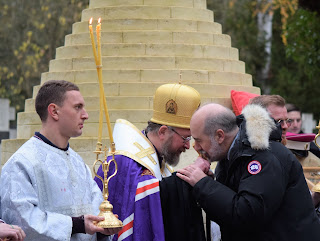The first chapter "On the ruins of the empire (Terek Cossacks in late 1917 - early 1918)" is devoted to the state of the Terek armed forces and the Terek region in the context of growing anarchy and attempts to overcome it at the end of 1917 - 1st half. 1918 (after the October Revolution until the beginning of the Terek uprising). This chapter examines the steps taken by the military government to preserve the Terek military units returning from the front of the Great War and attempts to create new armed formations, attention is paid to the difficult interethnic situation in the region, the role of deserter soldiers in the escalation of the Civil War in the region, the phenomenon of "Cossack Bolshevism" on Terek. Attention is also paid to the attempt of public groups of the Terek region to create a government that suits everyone, which resulted in the holding of the First Congress of the Peoples of the Terek and the role of the Terek Cossack armed formations in this.
The second chapter tells about the Terek uprising of 1918. The chapter describes the internal structure of the insurgent Cossack army and reconstructs the fighting on different fronts of the uprising.
The third chapter "Terek Cossack units as part of the Armed Forces of the South of Russia (AFSUR) and the Russian Army in the Crimea" is the most extensive. The chapter deals with a set of issues related to supply, armament, manning, discipline, morale, attitude towards the White movement and its goals, and other aspects, in relation to the Terek units. The chapter also makes an attempt to reconstruct the Terek Cossacks' battle path on all fronts of the Civil War (starting from the service of the Cossacks in their small homeland - in the Terek-Dagestan region - ending with the service of the Terek Cossacks in the Polish army, in the detachment of Yesaul Yakovlev).
It is worth noting the fourth chapter on the Terek rebellion. The struggle of the Terek Cossacks with the Bolsheviks after the departure of the White Army from 1920-1923. previously not become an independent object of research. The book shows that after the White Army left for the Crimea, the Cossacks did not lay down their arms for a long time. If possible, on the basis of the ChON documents, an attempt was made to describe the course of the partisan and counter-partisan struggle on the Terek in the early 1920s.
To write the book, 303 titles of books and articles (excluding reference publications), 21 titles of newspapers and magazines were used.
The source base of the monograph includes funds of 7 central and 4 regional archives (47 funds in total), 81 published documents, 146 published memoirs and diaries.























 The Kuban Cossack army numbers more than 57 thousand Cossacks, according to the press service of the Kuban Cossack army.
The Kuban Cossack army numbers more than 57 thousand Cossacks, according to the press service of the Kuban Cossack army.






































 Further, a funeral lithium was served for all those who died during the Civil War and who left for the Exodus, flowers were laid at the memorial Cross. After that, everyone went to the embankment of Kerch, where a military-historical reconstruction of the episode of the Russian Exodus took place with the participation of more than 300 reenactors representing military-historical clubs from all over Russia.
Further, a funeral lithium was served for all those who died during the Civil War and who left for the Exodus, flowers were laid at the memorial Cross. After that, everyone went to the embankment of Kerch, where a military-historical reconstruction of the episode of the Russian Exodus took place with the participation of more than 300 reenactors representing military-historical clubs from all over Russia. 

